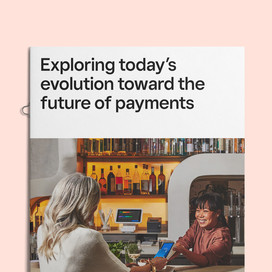Table of contents
People have engaged in commerce to exchange goods and services for payment throughout the ages. These financial transactions did not always involve monetary payments. There was a time when standard money did not even exist and people utilized other forms of payment to perform transactions. With the evolution of technology, money and payments have changed drastically. Current credit card processing technology and advanced business solutions make financial transactions possible at almost any time and virtually any place.
Bartering and Livestock
Bartering was an advantageous way to exchange goods and services for people many years ago because it enabled both parties to get what they needed. For example, two parties might exchange tools for services to fulfill the needs of both people. Livestock was also considered wealth that people could amass. The more cows or sheep someone owned, the wealthier they were.
- The History of Money: Explore this infographic that provides a comprehensive timeline of the evolution of money.
- Money: A Glossary of Political Economy Terms: Money has a broad definition that includes a variety of forms of value.
- Bartering Overview (PDF): Bartering involves trading one person’s goods or services for another person’s goods or services.
Precious Metal Coins
Ancient civilizations used to use beads and shells as coins. Eventually, they began using precious metals to make coins. People in the ancient civilization of Lydia were among the first to use coins made of gold and silver. This currency was both valuable and easily portable.
- Glossary of Coins: Explore the history of precious metal coins by reviewing terms included in this glossary.
- Ancient Coinage: What Ancient Coins Reveal for Modern Art Historians (PDF): Ancient coins were considered works of art created by artisans.
- History of Coins: This pictorial history shows ancient coins and an overview of various coins.
Leather Money
Leather was another material used for currency. People in ancient China utilized white deer skin for banknotes. The notes were large compared to the bills used in today’s society. Leather money could have been as large as one-foot squares of deerskin.
- Three Early Discoveries of Leather Money (PDF): Ancient leather coins have been discovered that were used as currency in some civilizations.
- The Chinese Monetary System: From Ancient Times to the Early Modern Period (PDF): Leather currency dates back to ancient Chinese civilizations.
- A Brief Timeline on the History of Money: White deer skin was used as money in China.
Paper Money
Eventually, the Chinese developed paper money. Civilizations struggled with determining and maintaining the value of paper money. In addition, challenges came in the forms of both inflation and the production of the currency. Paper money went in and out of use during periods of ancient history.
- A Quick History of Paper Money (PDF): Explore the chronology of paper money throughout history.
- The History of American Currency: American currency has had a tumultuous history as it has evolved through the centuries.
- History of Paper Money: The United States has had several different types of paper currency in circulation throughout its history.
Gold
England established gold as its standard of value in 1816. Following this event, Europe began backing bank notes with the gold standard. This meant the value of any currency was set by establishing its value in gold. The United States followed suit in 1900. Before this time, both gold and silver were used for dollars.
- Gold as Money: Gold coins date back to approximately 550 B.C.
- The History of Gold (PDF): Gold began as a feature of decorative objects and jewelry in ancient civilizations.
- Gold’s History as a Currency Standard: This timeline looks at the use of gold as currency from the present day back to ancient times.
Gold-Backed U.S. Dollar
In 1913, the United States established the Federal Reserve system. This official central bank served the financial interests of the nation. Federal Reserve notes were backed by gold at this time. One of the roles of the Federal Reserve was to ensure that notes and checks would be honored and could be redeemed for gold.
- Brief History of the Gold Standard in the United States (PDF): The current U.S. monetary system is backed by the federal government, not by gold or silver.
- Currency Notes (PDF): The gold standard describes a system in which currency is connected to a specific amount of gold.
- Gold Investor: Risk Management and Capital Investment: Gold has served as currency for thousands of years throughout many civilizations.
Credit Cards
Consumers began enjoying credit from retailers during the 20th century. Some retailers, such as department stores and gas stations, began creating individual credit cards to issue to consumers. These cards were created to make spending money more convenient for people. Diners Club was the first actual credit card, which gave consumers the ability to purchase meals from several restaurants located in New York City.

Exploring today’s evolution toward the future of payments
- What Is a Credit Card? (PDF): This payment method has revolutionized the way people pay for goods and services.
- Secret History of the Credit Card: Explore these resources to learn everything you need to know about credit cards.
- When Were Credit Cards Invented? (PDF): Merchants had been extending credit to consumers long before credit cards made their debut.
U.S. Dollar
In 1933, the United States discontinued the gold standard to keep Americans from cashing in their currency for gold, depleting the national gold supply, amid worsening deflation. From this point forward, the federal government became the official backer of the monetary system instead of gold. However, the U.S. continued to let foreign governments trade dollars for gold until 1971. At this point, the country became concerned that foreigners would sap the national gold reserves, leading to an end to this practice.
- History of ‘In God We Trust’: Explore the history of this motto that appears on U.S. currency.
- History of United States Currency: United States currency began with a coinage system, instituted shortly after ratification of the Constitution.
- History of the Mint: The United States Mint dates back to 1792.
Online Shopping
With the rise of the Internet during the 1990s, online shopping arrived on the scene. Consumers embraced the ability to peruse the Internet and make purchases. Common historical data suggests that Pizza Hut may have been one of the first retailers to execute an e-commerce transaction. The company began allowing people to order pizza on its website as early as 1994.
- A Timeline of the Internet and E-Retailing: Milestones of Influence and Concurrent Events: This timeline shows information about the evolution of retailing through current e-commerce activity.
- Fraud and the Internet: Online Shopping (PDF): Although convenient, Internet shopping can be a risk for consumers due to security issues.
- Online Social Networks and e-Commerce (PDF): Online merchants want to gather information about consumers while they shop, which assists with marketing research.
Mobile Payments
Coca-Cola receives credit for offering the first mobile payment transaction in 1997. The beverage retailer created special vending machines that enabled consumers to pay for their drinks by sending text messages from mobile devices. Since this time, mobile payments have skyrocketed in popularity. Now, more people than ever before are paying on the go, and more merchants can accept payments anywhere, without being tied down to a cash register.
- Mobile Payments: What’s in it for Consumers? (PDF): This document looks at the benefits of mobile payments and how they are used today.
- Consumers and Mobile Financial Services 2015 (PDF): The Federal Reserve presents detailed information about consumer spending habits that involve mobile devices.
- Payments on the Go: Making Sense of the Evolving Mobile Payments Landscape (PDF): Read about the history and future of mobile payments in this document.
![]()











